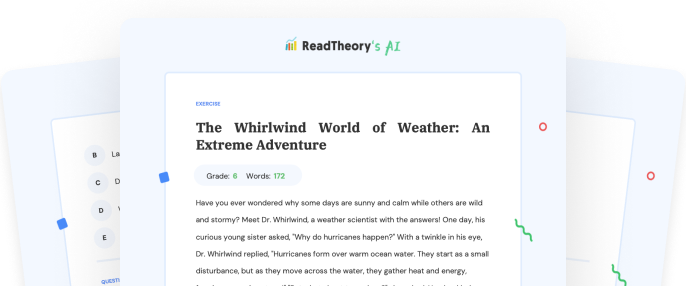Transform Your Teaching
with AI-Powered Worksheets
With ReadTheory’s Instant Worksheet Builder, you can create engaging, grade-appropriate worksheets tailored to your students in minutes. Spark curiosity, save time, and empower critical thinking with AI-powered tools designed for teachers like you.


Fast Fashion: A Closer Look at the Hidden Cost
Fast fashion, a term that emerged in the late 20th century, describes the rapid-fire pace of trends whisking their way from runway to retail. It's a business model that thrives on high volume, fast turnover, and low pricing. But beneath its veneer of affordability and trendiness lies a sinister reality: the exploitation of child labor.
In developing nations, where a significant portion of fast fashion manufacturing occurs, socio-economic conditions often compel children into labor. These children, some as young as five, work in hazardous conditions for long hours, earning meagre wages. They are robbed of their childhood, education, and potential. The physical and psychological harm inflicted on them is immense.
Consumer demand and corporate greed fuel this cycle of exploitation. The allure of cheap, trendy apparel often blinds us to the true cost: the suffering of millions of children. Meanwhile, corporations prioritize profit over ethical labor practices, perpetuating a system that thrives on exploitation.
However, each one of us holds the power to create change. By choosing ethically made apparel, questioning brands about their labor practices, and supporting organizations fighting against child labor, we can help break this cycle. As consumers, it's our responsibility to be informed and make choices that align with a fair and just world.
Remember, every purchase is a vote for the kind of world we want to live in. Choose wisely.
Question 1
What does the term 'Fast fashion' refer to?
A type of clothing material
A fashion show which is conducted very quickly
The rapid cycle of clothing trends from runway to retail
Fashion designed for runners
Clothing that is designed to be worn only once
Question 2
What is one of the sinister realities of fast fashion?
Clothes are not durable
It promotes a throw-away culture
Exploitation of child labor
It is not trendy
It is expensive
Question 3
What fuels the cycle of exploitation in the fast fashion industry?
The love for fashion
Consumer demand and corporate greed
Lack of education
The need for trendy clothes
Lack of fashion sense
Question 4
How can consumers help to break the cycle of exploitation in the fast fashion industry?
By buying more clothes
By ignoring the issue
By choosing ethically made apparel, questioning brands about their labor practices, and supporting organizations fighting against child labor
By demanding cheaper clothes
By purchasing only from top-known brands
Question 5
What is the message the author is trying to convey?
Fast fashion is the only affordable option
Child labor is necessary for fast fashion
Every purchase is a vote for the kind of world we want to live in
Fast fashion is the most ethical industry
Child labor should be ignored
 or share via
or share via

Assign the ReadTheory pretest to determine students' reading levels.

Why Teachers Love
Instant Worksheet Builder?

Tailored Content for Every Student
Craft worksheets with passages and multiple-choice questions customized to your chosen topic and grade level, ensuring relevance and engagement.

Save Hours
of Prep Time
Our AI, Lexi, generates complete worksheets—passages, questions, and answers—in minutes, freeing you to focus on teaching, not planning.

Standards-Aligned Learning
Every worksheet is designed to boost reading comprehension and critical thinking, aligning seamlessly with State Standards to help your students shine.
Personalized teaching
for personalized learning
Browse worksheets created and refined by educators using Lexi—your source for inspiration and ready-to-use resources.


ReadTheory is free for Teachers to use.
Join thousands of educators using ReadTheory for free. Sign up today and start creating in just minutes!





